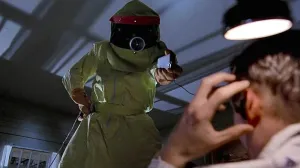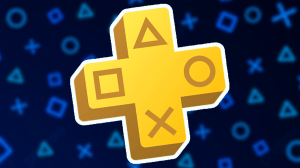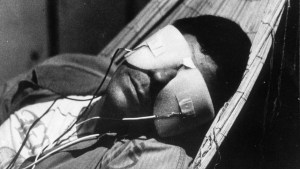
On February 27th 1996, Game Freak released the first pair of Pokemon games in Japan.The RPG-esque gameplay of Pokemon Red/Green was deceptively simple.Players caught wild Pokemon and leveled them up by battling other trainers/Pokemon.However, Pokemon had a unique wrinkle, a secondary goal best defined by the franchise’s catchphrase: “Gotta Catch Them All”.With 151 Pokemon to collect, trainers poured hundreds of hours into the game, evolving, trading and searching until they completed their Pokedex.
Videos by ComicBook.com
Over the next 20 years, Pokemon became one of Nintendo’s biggest franchises, which included a popular trading game, a long-running anime and plenty of spinoff games.To celebrate Pokemon Day, here’s a look at how the franchise has evolved over the last 20 years:
The Pokedex

If you haven’t played Pokemon since Red/Blue, you probably don’t recognize most of the series’ catchable and trainable creatures. Each successive generation of games has introduced hundreds of new Pokemon, with the official count at 721 Pokemon as of Pokemon Omega Ruby/Alpha Sapphire, the newest Pokemon game. Although purists sometimes complain that the newer generations of Pokemon aren’t as imaginative as the original (citing Pokemon like Klefki and Garbodor as examples), there’s plenty of great Pokemon in each game. Ken Sugimori, the man who designed all 151 original Pokemon, still leads the design team for new Pokemon and draws the “final” design for each new monster. Anyone who complains about the newer generation of games hasn’t seen Pokemon like Garchomp, Noivern or Carracosta, all of which could go a few rounds with the likes of classic Pokemon like Charizard or Nidoking.
With so many Pokemon to find and collect, “catching them all” can be a daunting task, but recent generations of games have made finding Pokemon a lot easier thanks to the Global Trade System, an in-game feature that allows you to trade with strangers online.
Poke Balls

Originally, trainers caught Pokemon using one of four different types of Poke Balls, each geared towards Pokemon of different strengths. While the Poke Ball, Great Ball and Ultra Ball are still the “core” Poke Balls, Generation II introduced new types of Poke Balls that made it easier to catch Pokemon in specific situations. The Level Ball, for instance, made it easier to catch low-level Pokemon, while the Timer Ball had a higher rate of success the longer a battle went on. There’s now 26 types of Poke Balls available to find, although some players are brave enough to try running through a game using ONLY the original Poke Ball.
The Regions

The Kanto region from Red/Blue/Yellow (and the corresponding remakes of Fire Red/Leaf Green) is based off the real life Kanto region in Japan where Tokyo is located. Regions introduced in subsequent generations are all based on real geographic locations. Early Generations were based on other Japanese regions: Johto is equivalent to the Mount Fuji-dominated Kansai region, Hoenn is based off of the coastal Kyushu region, and Sinnoh is based off the northernmost island of Hokkaido. However, beginning in Generation V, the Pokemon games took on a more international flare. The Unova Region is based on New York City and features equivalents to the Statue of Liberty and Central Park, while new Kalos Region is based off of France and features the Pokemon version of the Eiffel Tower.
The Meta-Game

Unless you had a Link Cable and friends who also played the game, Pokemon Red/Blue had limited multiplayer capabilities. As the Pokedex grew and Nintendo added online connectivity to the games, a secondary “Meta-Game” centered around online play gained steam. While any player with high level Pokemon can clear the single player game, the meta-game required hundreds of additional hours of Pokemon breeding and strategizing to build the perfect team. Items, secondary effects and Hidden Abilities all come in play in the meta-game, leading to a entirely different style of battling. In order to keep online play competitive and focused on strategy, many players use unofficial rules found on the website Smogon which divide Pokemon into “tiers” of similar strength. Pokemon battling even has a formal World Championship, in which the top trainers around the world compete to become the top trainer in the world.
Evolutions

One of the key game mechanics of Pokemon is the ability to evolve your Pokemon into a stronger related species. Originally, there were three ways to evolve a Pokemon: leveling up, trading or using an evolutionary stone, but Generation II introduced even more new evolutionary items. Some Pokemon evolve when holding a specific item, some evolve during certain times a day, and others will only evolve at certain routes or places. One Pokemon, Inkay, will only evolve when the 3DS is held upside down!
The most recent games also introduced Mega Evolution, which causes some Pokemon to undergo a temporary evolution while carrying a specific stone. Not every Pokemon can Mega Evolve, but it’s likely we’ll see even more Mega Evolutions in future games.
Battling

One area where the Pokemon games had to catch up to the Pokemon anime were alternative styles of battle. While “double battles” (where pairs of Pokemon battle instead of a standard 1v1 setting) were a common feature in even the earliest animes, the games didn’t introduce double battles until Pokemon Ruby/Sapphire. The games subsequently added even more battle variations, including triple battles, rotation battles (teams of Pokemon fight at the same time, but switch in and out at will), and even inverse battles, where a Pokemon’s weaknesses and resistances are reversed. You can even encounter multiple Pokemon at the same time, thanks to the new Horde Encounters mechanic.
The Player

Each Generation of Pokemon comes with a new “player character” that players control throughout the game. The earliest Pokemon games only allowed you to control a male character (Red for Generation I and Ethan for Generation II) but beginning with Pokemon Crystal, players could choose between a male or female character. Although the original characters had set appearances, Pokemon X/Y finally allowed players to customize their looks and clothing.
The Anime

It might surprise you to learn that Ash, the protagonist of the original Pokemon anime you watched as a kid, is still on his neverending quest to become a Pokemon master with Pikachu at his side. While Misty and Brock eventually departed the show (Brock became a Pokemon doctor while Misty still runs the Cerulean City gym), the show introduced new characters based on characters from newer games. Ash’s group of Pokemon has also shifted from generation to generation, depending on which region he’s exploring. Ash now has 68 Pokemon (including 30 Tauros), most of whom still live at Professor Oak’s lab. Don’t worry, Ash still has fan favorites Bulbasaur, Squirtle and Charizard available to use, but he only brings him out on special occasions.
Honestly, Ash’s current Pokemon team might be his strongest yet. In addition to Pikachu, he has a Talonflame, a Hawlucha, a Noibat and a Greninja that can actually change forms (similar to Mega Evolution) thanks to its strong bond with Ash. Cartoon Network is still showing new episodes of Pokemon on Sunday, so you should tune in sometime to see how much the show has changed over 18 seasons.








